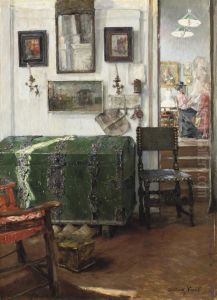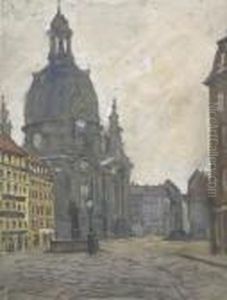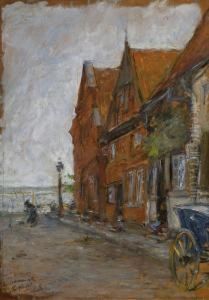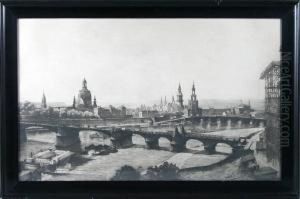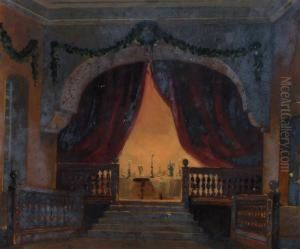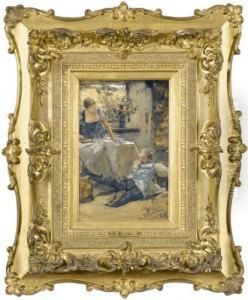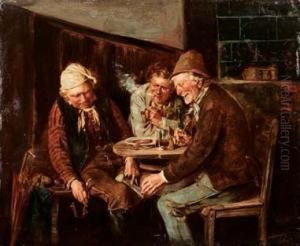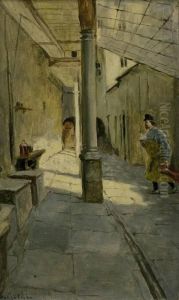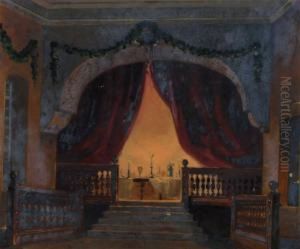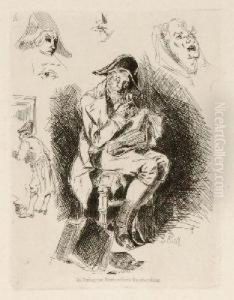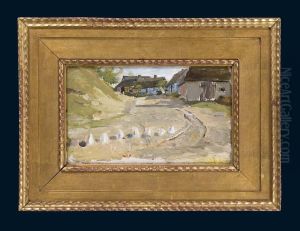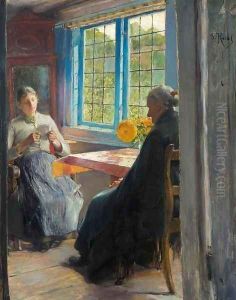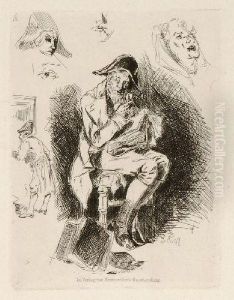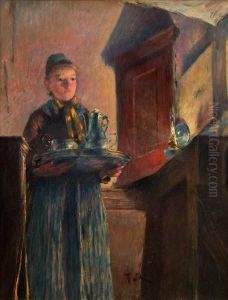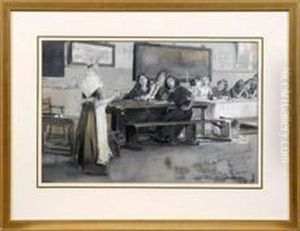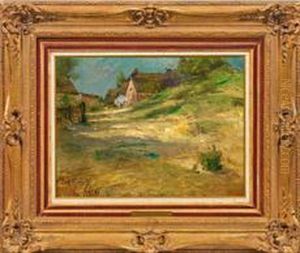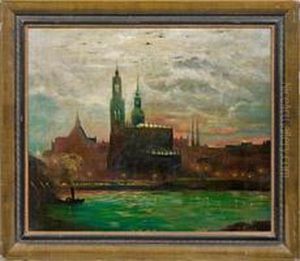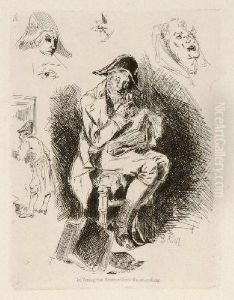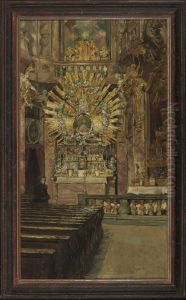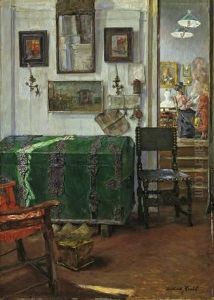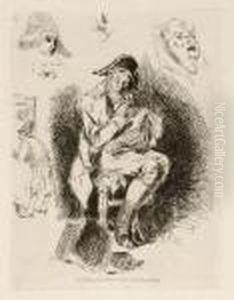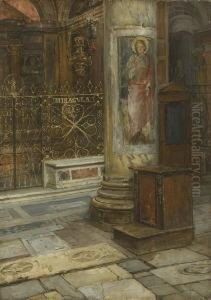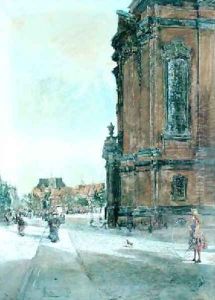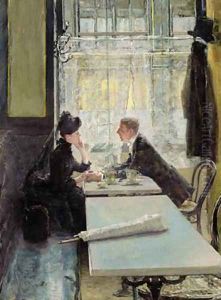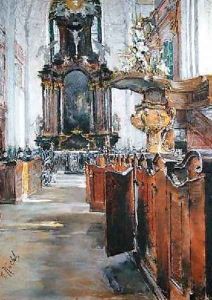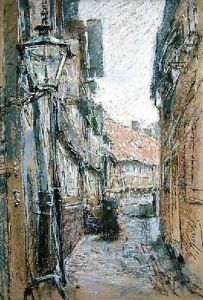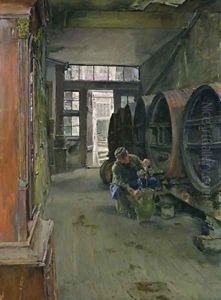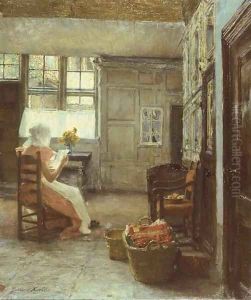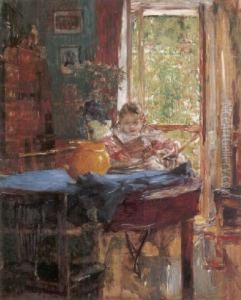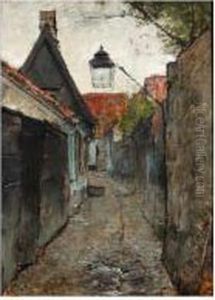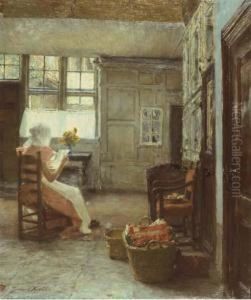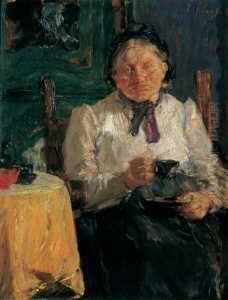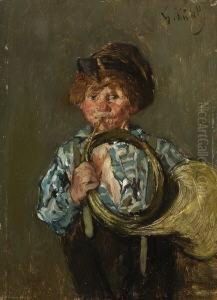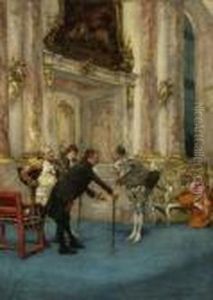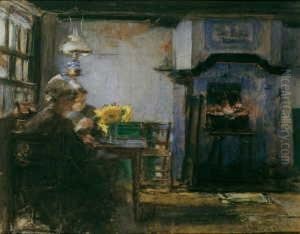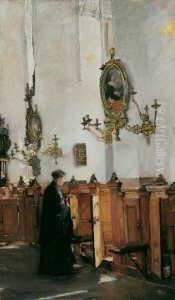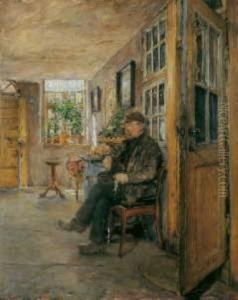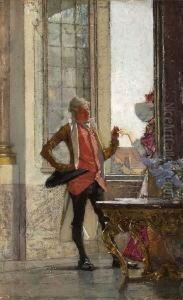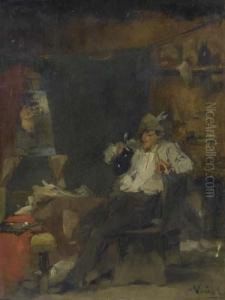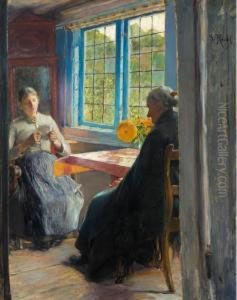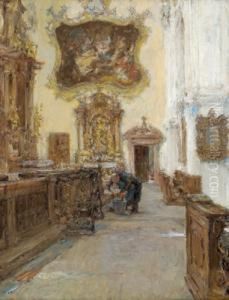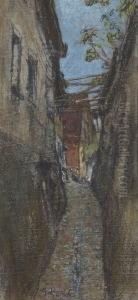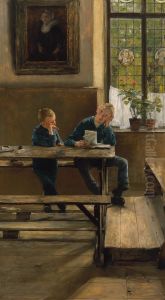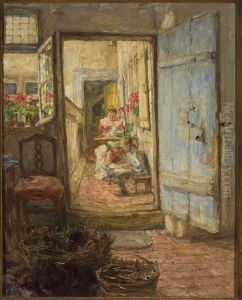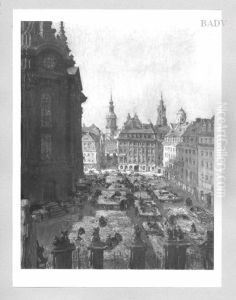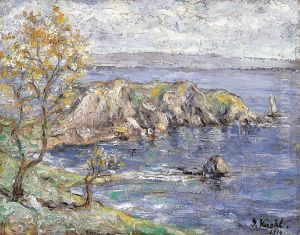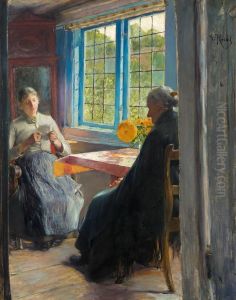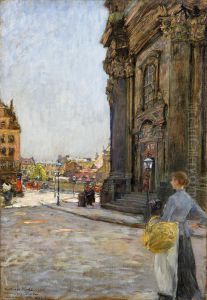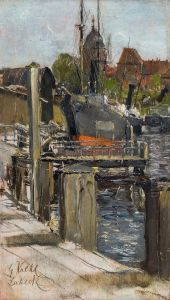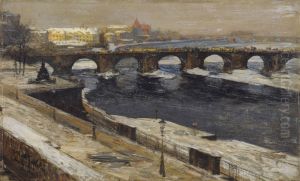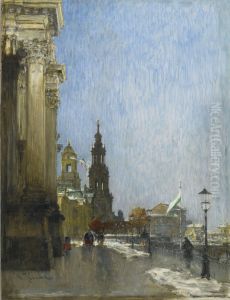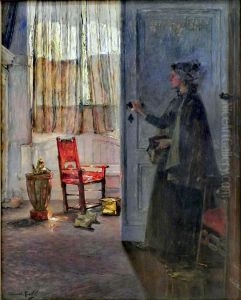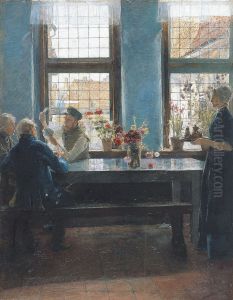Gotthardt Kuehl Paintings
Gotthardt Kuehl was a distinguished German painter born on November 28, 1850, in Löbau, Saxony. He is known for his contribution to the Impressionist movement, although his work also includes elements of Realism. Kuehl displayed a keen interest in art from an early age and pursued his passion by studying at the Dresden Academy of Fine Arts. He was a student of the acclaimed artists Ferdinand Pauwels and Leon Pohle, who helped refine his artistic skills.
During his formative years, Kuehl traveled extensively, including stays in Belgium and the Netherlands, where the work of the Dutch masters deeply influenced him. He also spent time in Paris, which was the hub of the Impressionist movement. There, he was inspired by the works of Claude Monet and other French Impressionists, which is evident in his use of light and color.
Kuehl's style evolved over the years as he experimented with different techniques and was particularly noted for his interior scenes, landscapes, and urban life depictions. His paintings often portrayed the everyday life of people, imbued with a sense of realism and attention to detail. He was also recognized for his frescoes and murals, which adorned various public buildings in Germany.
In 1891, Gotthardt Kuehl accepted a professorship at the Dresden Academy of Fine Arts, a position he held until his death. He played a significant role in shaping the academy's direction and influenced a generation of young artists. Kuehl's work was widely exhibited in Germany and throughout Europe, earning him a reputation as one of the leading painters of his time.
Kuehl's legacy is marked by his contribution to the development of modern German painting. He successfully merged the observational precision of Realism with the vibrant color palette and light effects of Impressionism. Gotthardt Kuehl passed away on January 13, 1915, in Dresden. His works continue to be celebrated and are held in numerous public and private collections.
